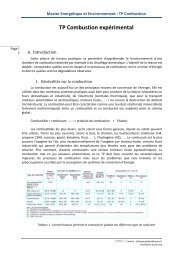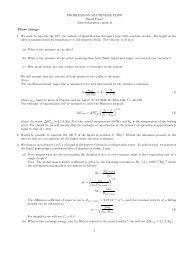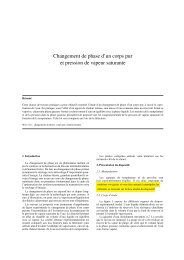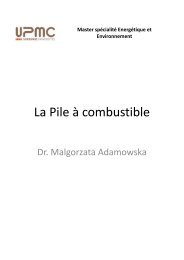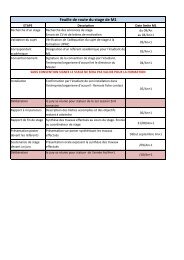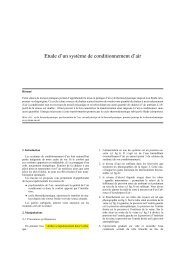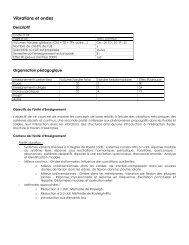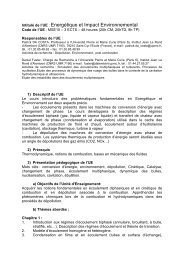CHAPITRE 1: Notions de thermodynamique - Master 2 en ...
CHAPITRE 1: Notions de thermodynamique - Master 2 en ...
CHAPITRE 1: Notions de thermodynamique - Master 2 en ...
You also want an ePaper? Increase the reach of your titles
YUMPU automatically turns print PDFs into web optimized ePapers that Google loves.
3. Les différ<strong>en</strong>tes formes d’énergie<br />
Gestion <strong>de</strong> l’Energie et Environnem<strong>en</strong>t<br />
Limitation <strong>de</strong> l'utilisation <strong>de</strong>s hydrocarbures :<br />
• raréfaction <strong>de</strong>s ressources<br />
• protocole <strong>de</strong> Kyoto (16/02/05) : réduction <strong>de</strong> 5,2 % <strong>de</strong>s émissions <strong>de</strong> gaz à effet <strong>de</strong> serre<br />
d’ici 2012 par rapport aux émissions <strong>en</strong> 1990 (CO 2<br />
, CH 4<br />
, protoxy<strong>de</strong> d'azote (N 2<br />
O),<br />
composés halogénés du carbone (CxHyHalz avec Hal halogènes tels fluor, chlore,<br />
brome...)<br />
Durée <strong>de</strong> vie (temps nécessaire à la disparition <strong>de</strong> 50% du gaz) : 12 ans pour CH 4<br />
, un<br />
siècle pour CO 2<br />
, 120 ans pour N 2<br />
O, 50000 ans pour CF 4<br />
(utilisé pour la production<br />
d'aluminium).<br />
<strong>CHAPITRE</strong> 2: Besoins énergétiques actuels et pot<strong>en</strong>tiels dans le mon<strong>de</strong><br />
77





